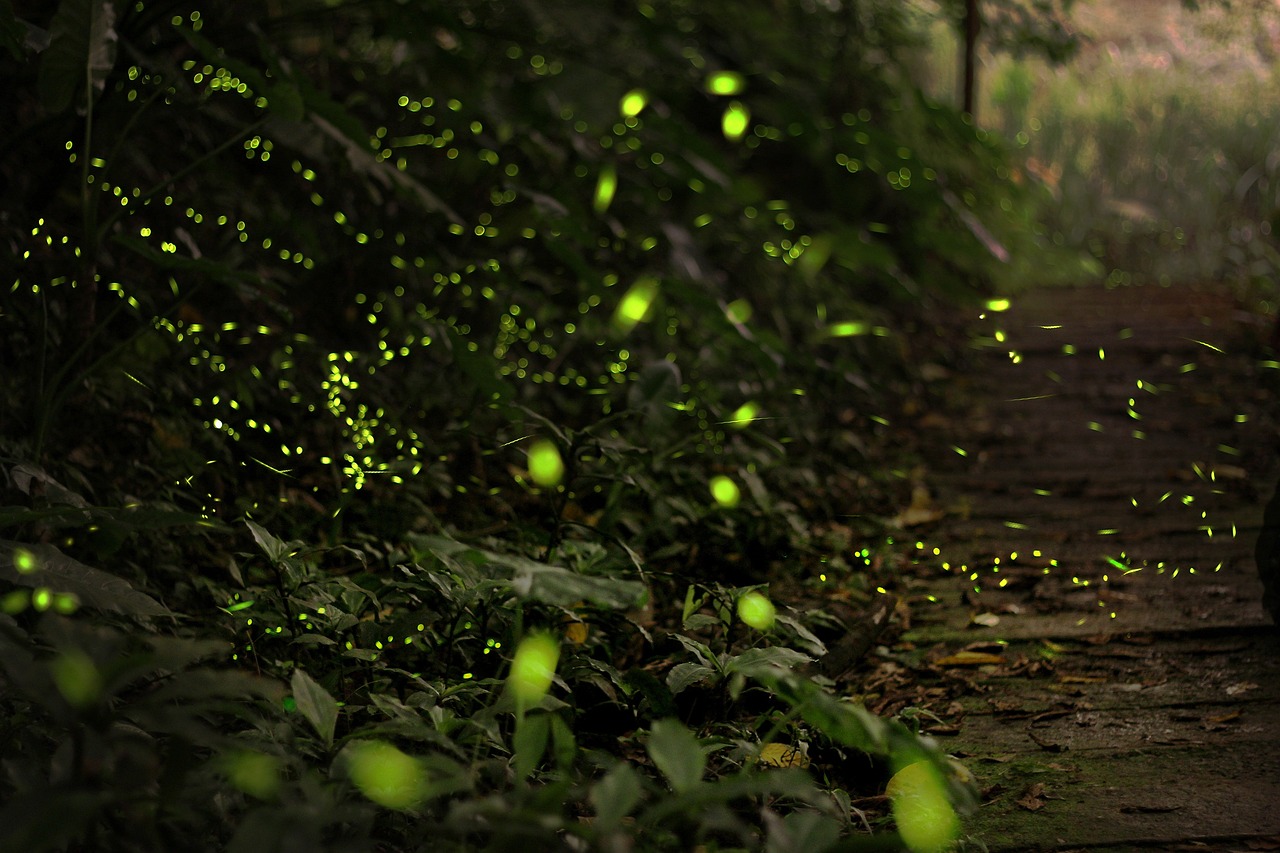10 Plants That Attract Fireflies

Fireflies, with their enchanting glow, bring a magical ambiance to summer nights. They are not just delightful to watch; these luminous insects play a crucial role in the ecosystem. One effective way to attract fireflies to your garden is by planting specific flora that cater to their needs. Here are ten plants that are known to attract fireflies and enhance your garden’s nocturnal beauty.
10 Plants That Attract Fireflies
1. Goldenrod (Solidago spp.)
Goldenrod is a vibrant yellow flower that blooms in late summer to early fall. Its tall, striking stems provide an excellent habitat for fireflies to rest and hide during the day. The dense clusters of flowers attract not only fireflies but also a variety of pollinators, making it a fantastic addition to any garden.
Goldenrod thrives in a variety of soil types and can withstand drought conditions, making it a low-maintenance option for gardeners. Planting goldenrod in sunny or partially shaded areas will ensure a continuous display of golden blooms, creating an inviting environment for fireflies and other beneficial insects.
2. Queen Anne’s Lace (Daucus carota)
Queen Anne’s Lace, also known as wild carrot, is a delicate white flower that forms umbrella-like clusters. Its airy structure provides an ideal landing and hiding spot for fireflies. The tiny flowers also attract other insects, which serve as prey for the fireflies, supporting their lifecycle.
This plant is easy to grow and thrives in well-drained soil with full sun exposure. Queen Anne’s Lace adds a touch of elegance to gardens with its lacy foliage and intricate flowers, making it not only beneficial for attracting fireflies but also aesthetically pleasing.
3. Joe-Pye Weed (Eutrochium spp.)
Joe-Pye Weed is a tall perennial that produces large clusters of pinkish-purple flowers. Its height and dense flower heads provide excellent cover for fireflies. The nectar-rich flowers also attract various pollinators, creating a bustling ecosystem in your garden.
This plant prefers moist, well-drained soil and partial to full sun. Joe-Pye Weed can grow quite tall, making it an excellent backdrop for garden borders or as a focal point in flower beds. Its long blooming period from midsummer to fall ensures that fireflies will have a consistent habitat.
4. Common Milkweed (Asclepias syriaca)
Common Milkweed is renowned for its role in supporting monarch butterflies, but it also attracts fireflies. The clusters of fragrant, pinkish-purple flowers provide nectar for a variety of insects. The large leaves and tall stalks offer ample hiding spots for fireflies during the day.
Milkweed is a hardy plant that thrives in well-drained soil and full sun. It spreads easily, creating dense stands that serve as a refuge for fireflies and other wildlife. In addition to attracting fireflies, milkweed helps support the entire pollinator population in your garden.
5. Wild Bergamot (Monarda fistulosa)
Wild Bergamot, or bee balm, produces showy, lavender flowers that bloom in mid to late summer. Its tubular flowers attract a range of pollinators, including fireflies. The plant’s aromatic foliage and tall stems provide additional shelter for these nocturnal insects.
This hardy perennial prefers well-drained soil and full sun to partial shade. Wild Bergamot’s striking flowers and minty fragrance make it a favorite among gardeners. Its ability to attract fireflies and other beneficial insects enhances the biodiversity of any garden.
6. Yarrow (Achillea millefolium)
Yarrow is a hardy perennial that produces clusters of tiny flowers in various colors, from white to yellow and pink. The dense flower heads provide an ideal platform for fireflies to rest and feed. Yarrow’s fern-like foliage also offers hiding spots for fireflies during the day.
This plant thrives in well-drained soil and full sun, making it an easy addition to most gardens. Yarrow’s long blooming period and low maintenance requirements make it a popular choice for gardeners looking to attract fireflies and other beneficial insects.
7. Evening Primrose (Oenothera biennis)
Evening Primrose is a unique plant that opens its bright yellow flowers at dusk, coinciding with the time fireflies become active. The sweet scent and vivid color of the flowers attract fireflies and other nocturnal pollinators, creating a lively nighttime garden.
This biennial plant prefers well-drained soil and full sun. Evening Primrose’s evening blooms add a special charm to gardens and provide essential nectar sources for fireflies. Its ability to thrive in poor soil conditions makes it a versatile and attractive addition to any garden.
8. Ferns (Various species)
Ferns, with their lush, green fronds, provide excellent cover for fireflies. These shade-loving plants create a cool, moist environment that is ideal for fireflies to hide during the day. The intricate foliage of ferns also offers numerous crevices for fireflies to rest.
Ferns thrive in shady, moist areas of the garden and require minimal maintenance. Their graceful fronds add texture and depth to garden landscapes. By planting ferns, you create a hospitable habitat for fireflies and enhance the overall beauty of your garden.
9. Phlox (Phlox paniculata)
Phlox is a colorful perennial that produces fragrant clusters of flowers in various shades of pink, white, and purple. The dense flower heads provide nectar for fireflies and other pollinators, while the tall stems offer resting spots for fireflies.
This plant prefers well-drained soil and full sun to partial shade. Phlox’s vibrant blooms and sweet fragrance make it a garden favorite. Its ability to attract fireflies and other beneficial insects contributes to a thriving garden ecosystem.
10. Bee Balm (Monarda didyma)
Bee Balm, also known as Oswego tea, is a showy perennial that produces vibrant red, pink, or purple flowers. The tubular flowers attract a variety of pollinators, including fireflies. The tall, sturdy stems and aromatic foliage provide shelter for fireflies during the day.
This plant thrives in well-drained soil and full sun to partial shade. Bee Balm’s striking flowers and minty aroma make it a popular choice for attracting fireflies. Its ability to support a diverse range of pollinators enhances the ecological balance of any garden.
